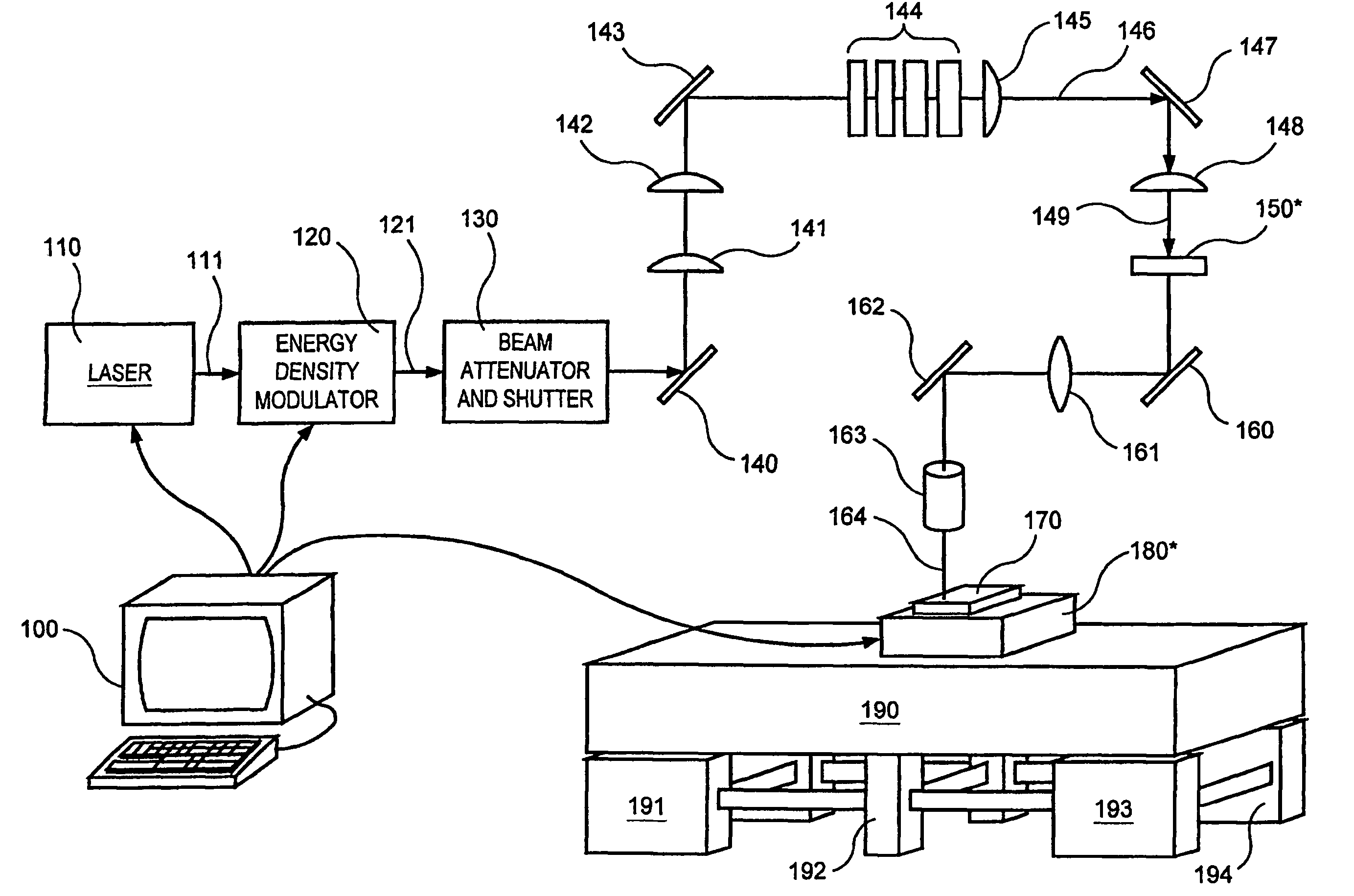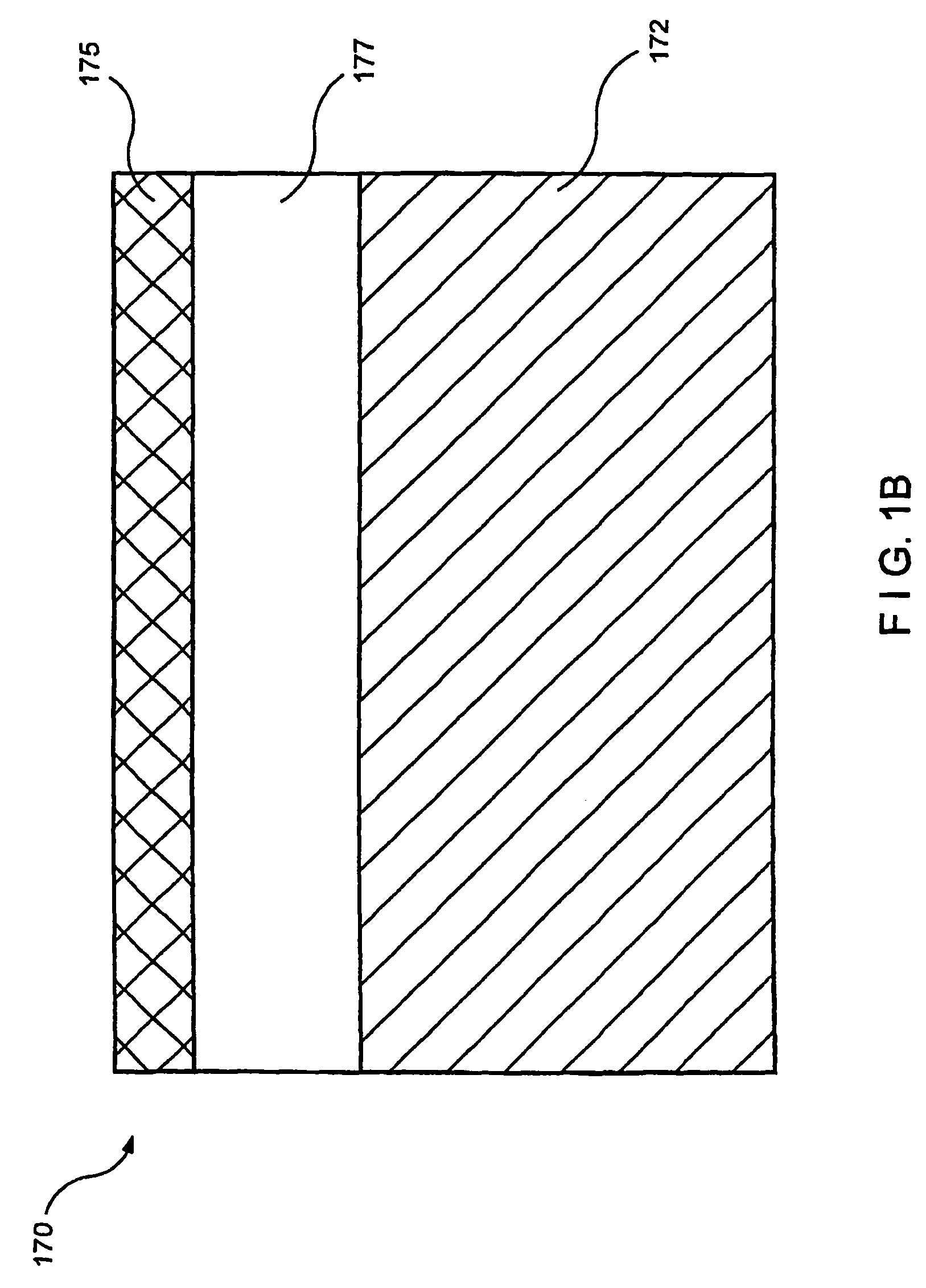Laser crystallization and selective patterning using multiple beamlets
a laser crystallization and selective patterning technology, applied in the field of films processing techniques, can solve the problems of varying energy densities of semiconductor films processed using the conventional system and processes, tft devices not operating in the uniform manner from one crystallized region to another, and the next consecutive region may be visible, so as to reduce the perception of having a visible border, reduce the contrast between the two neighboring regions, and the performance of tft devices
- Summary
- Abstract
- Description
- Claims
- Application Information
AI Technical Summary
Benefits of technology
Problems solved by technology
Method used
Image
Examples
second embodiment
[0066]Then, when the second conceptual column 206 is started to be processed, the first one-third portion of the beam which impinges and irradiates first portions 915 of the first region 910 of this second conceptual column 206 of the semiconductor thin film 175 which were masked by the third section C′730 of the mask 150′ (see FIGS. 8F, 9F). Thus, FIGS. 8G, 8H, 9G, 9H show that the regions of the second conceptual column 206 of the semiconductor thin film 175 is irradiated by the beam pulses patterned by the mask 150′, such that the third one-third portion of the masked beam pulse 164 leads the second one-third portion of the masked beam pulse 164, which then lead the third one-third portion of the masked beam pulse 164 in their irradiation of all of the regions of the second conceptual column 206 of the semiconductor thin film 175 according to the present invention.
[0067]In this manner, all conceptual columns of the sample 170 can be properly irradiated by the beam pulses 164 that...
first embodiment
[0069]As shown in FIGS. 11A and 12A, the masked beam pulse 164 patterned by the first top section X 1000 of the mask 150″ so as to impinge and irradiate a first region 810 on the first conceptual column 205 of the semiconductor thin film sample 170, while the masked beam pulse 164 patterned by the first bottom section X′1030, the second top section Y 1050, and the second bottom section Y′1070 of the mask 150″ irradiate an area away from the edge 210′ of the semiconductor thin film 170. Therefore, as shown in FIGS. 11A and 12A, the first region 1110 of the semiconductor thin film is irradiated only by the beam pulse 164 masked by the first top section X 1000 of the mask 150″. As shown in FIG. 12A, the irradiated first region 1110 is initially composed of irradiated first portions 1112 which are provided at a distance from one another, and substantially match the positions and orientations of the slits 1010 of the first top section X 1000 of the mask 150″. As with the first embodiment...
PUM
| Property | Measurement | Unit |
|---|---|---|
| temperatures | aaaaa | aaaaa |
| width | aaaaa | aaaaa |
| length | aaaaa | aaaaa |
Abstract
Description
Claims
Application Information
 Login to View More
Login to View More - R&D
- Intellectual Property
- Life Sciences
- Materials
- Tech Scout
- Unparalleled Data Quality
- Higher Quality Content
- 60% Fewer Hallucinations
Browse by: Latest US Patents, China's latest patents, Technical Efficacy Thesaurus, Application Domain, Technology Topic, Popular Technical Reports.
© 2025 PatSnap. All rights reserved.Legal|Privacy policy|Modern Slavery Act Transparency Statement|Sitemap|About US| Contact US: help@patsnap.com



